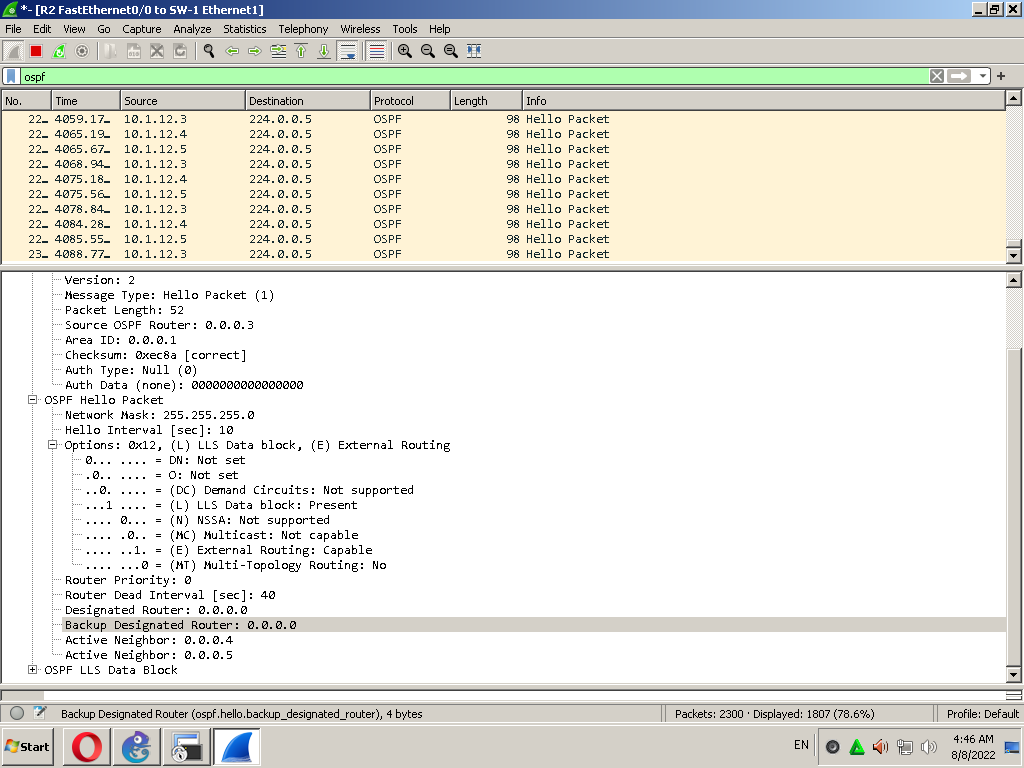Hi Everyone
all routers are within area 1
R1 is DR with pri=100
R2 is BDR with pri=50
i will try to disable R2 (BDR) and see what will happened
BUT 1. before R2 fail, this is what R3 see.R3 sees that there is a BDR which is 10.1.12.2
R2(config)#interface fastEthernet 0/0
R2(config-if)#shutdown
after the BDR fail , R1(DR) send LSupdate message to dst=224.0.0.5 all ospf routers and received LSack from all DROthers
and this is the output from R3 after the BDR fail
the BDR field is 0.0.0.0
the first question is :=
the question is,how could this happened ? i thought that we should have BOTH DR AND BDR at the same time
===================================================
please keep follow me .this LAN has DR only which is R1 but the BDR is down there is not any BDR
but i`ll disable the DR R1
R1(config)#interface fastEthernet 0/0
R1(config-if)#shutdown
but i don`t see any difference in the wireshark
the second question, why i don`t see anything happened when the DR failed like what happend when the BDR failed ?
the third question,
how could we have a LAN in OSPF which does not have DR NOR BDR routers ?
R3,R4 and R5 now are DROther
let`s add link on R3 to see what will happened
R3(config-if)#int loo0
R3(config-if)#ip address 3.3.3.3 255.255.0.0
R3(config-if)#ip ospf 1 area 1
R3(config-if)#ip ospf network point-to-point
i don
t see anything happend .R3 dont send any updatesthe forth question,why R3 didn
t send any updates ?  R4 didnt get any OSPF updates from R3, why ?
===============================
fifth question,
if the DR is up and the BDR failed, how the DROthers detect that the BDR failed and need to elect another BDR ?
what is the difference between DR failed and BDR failed from DROthers point of view ?







